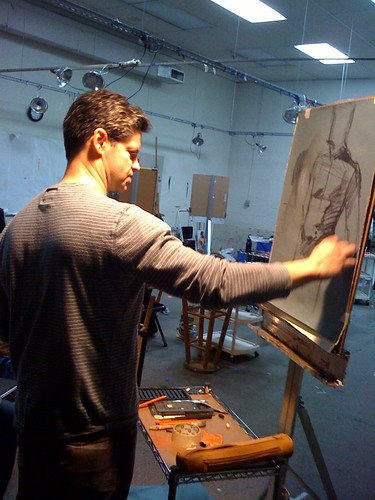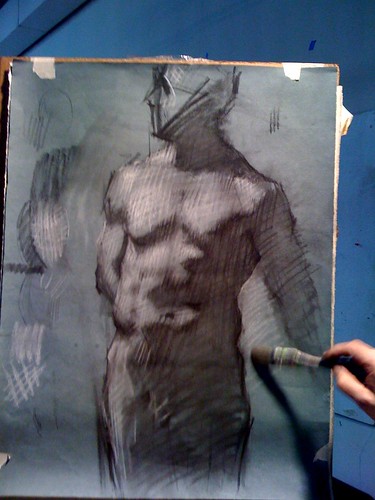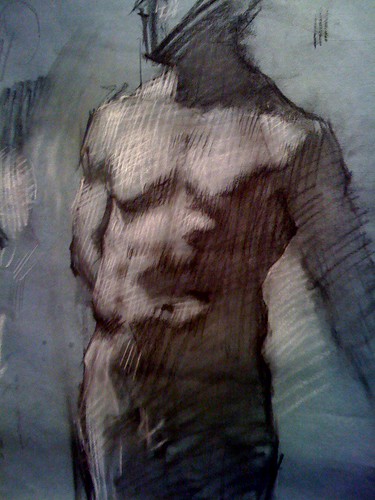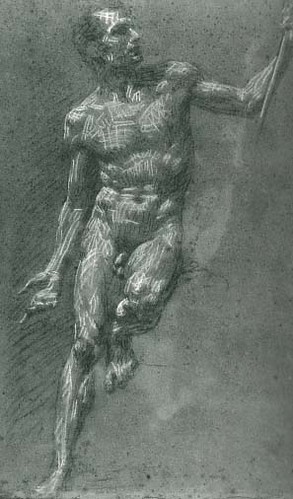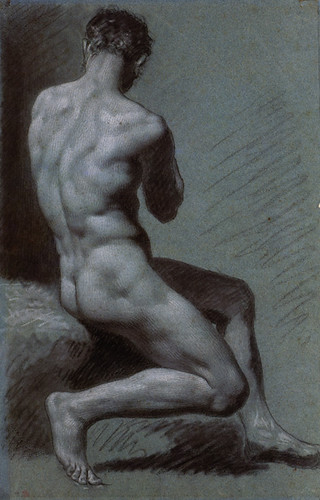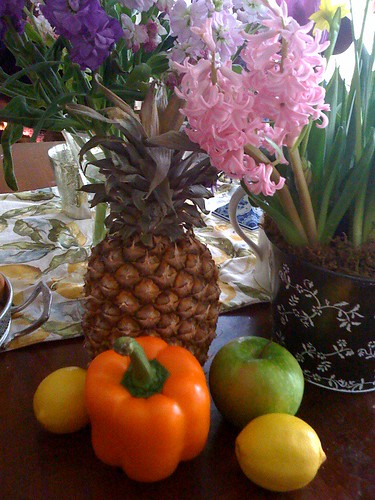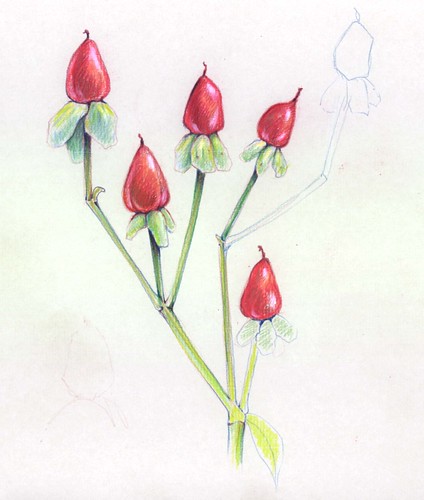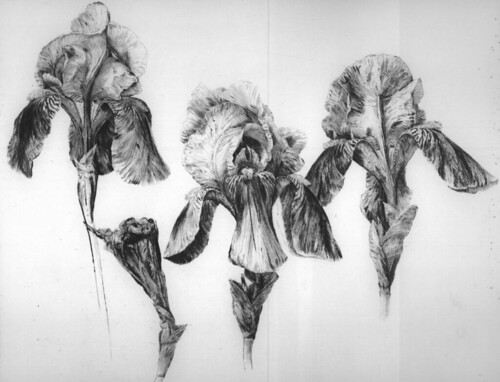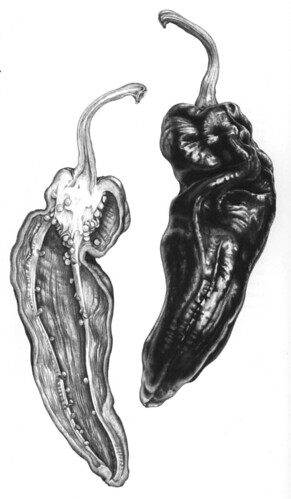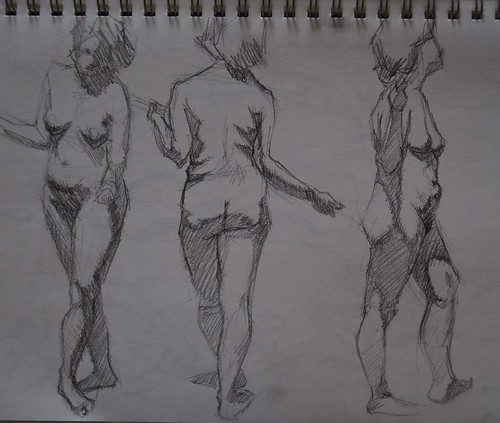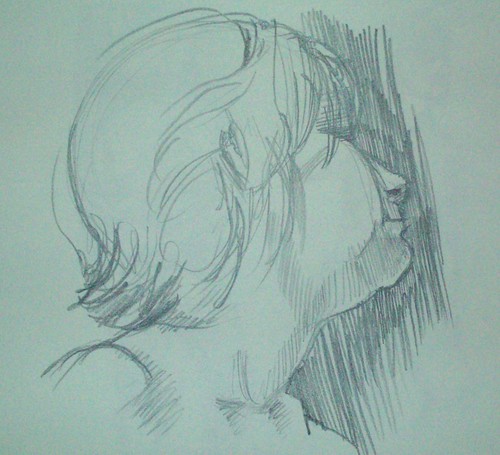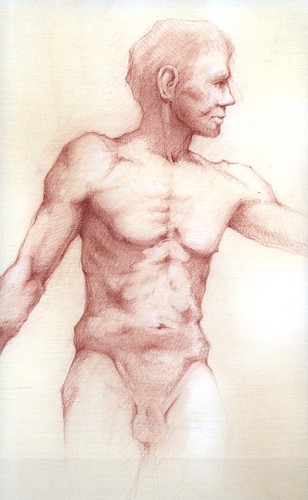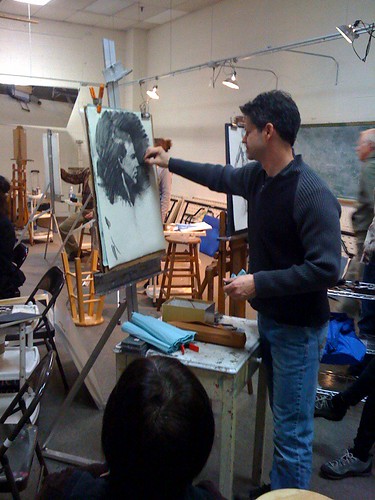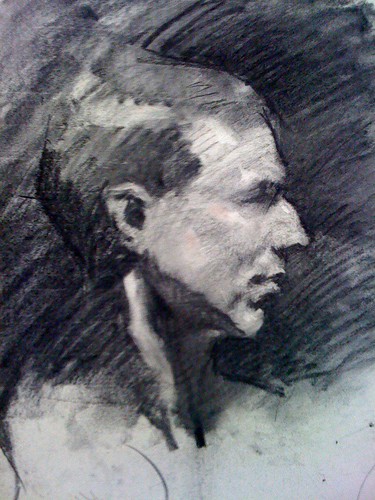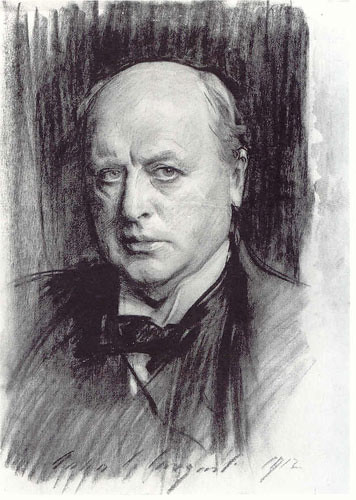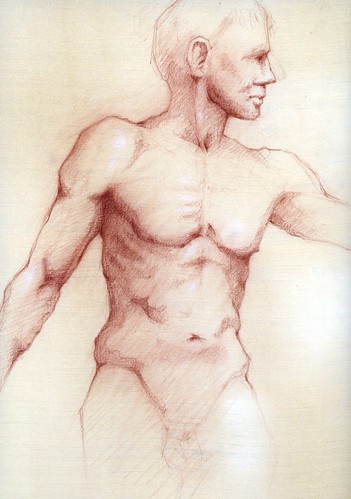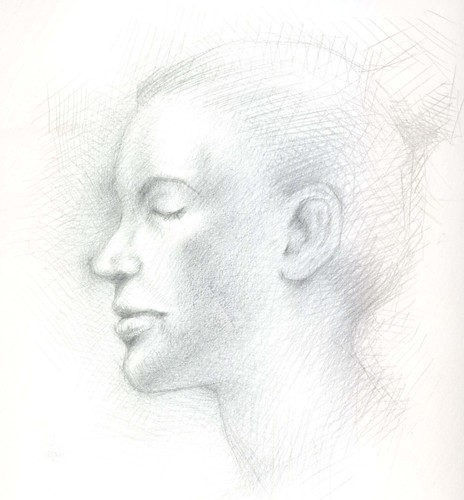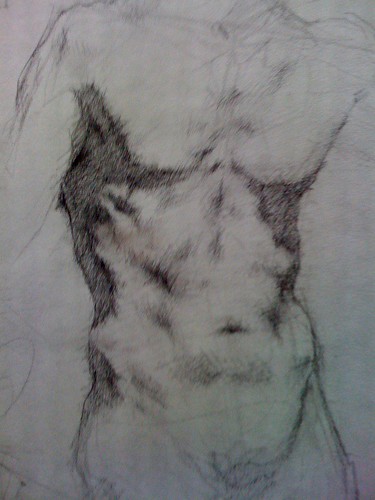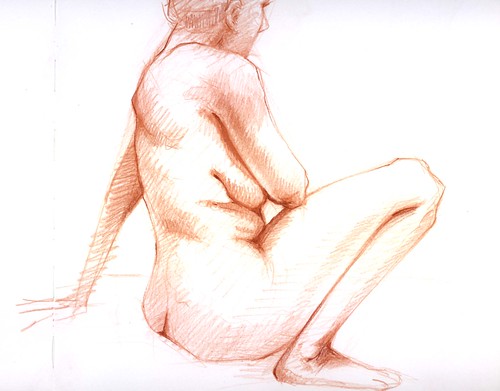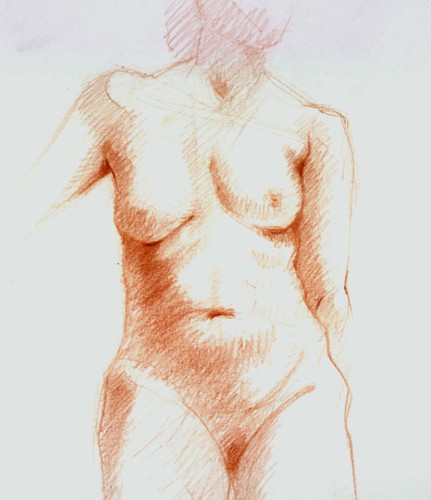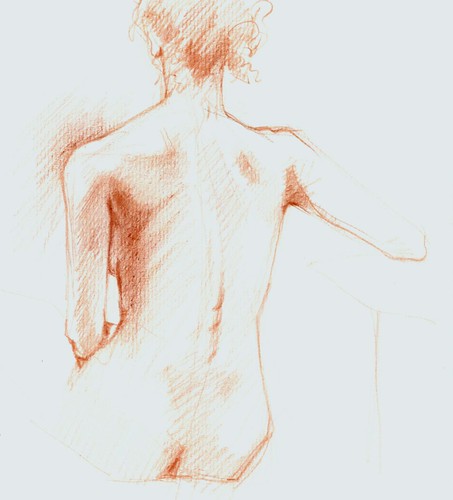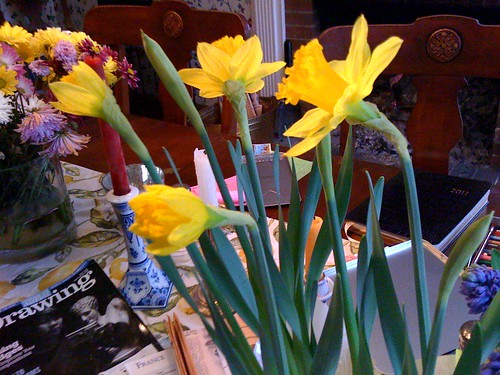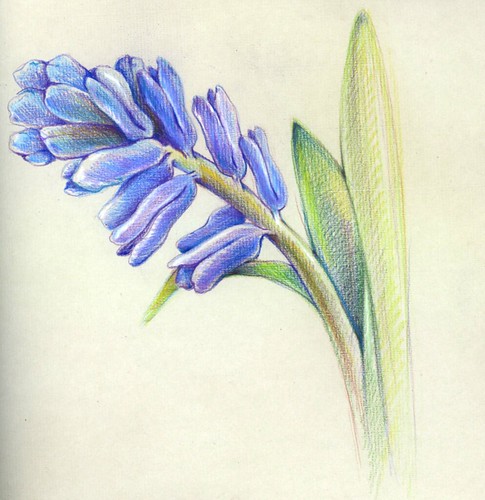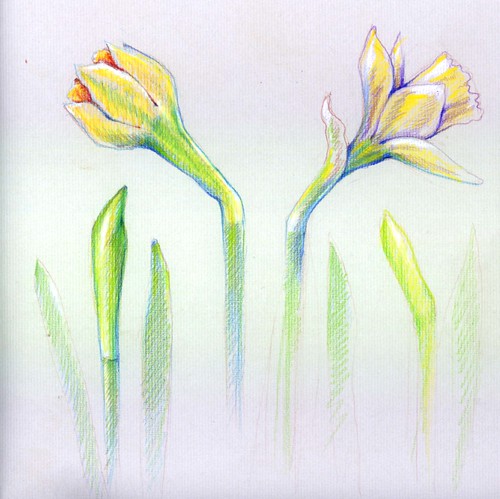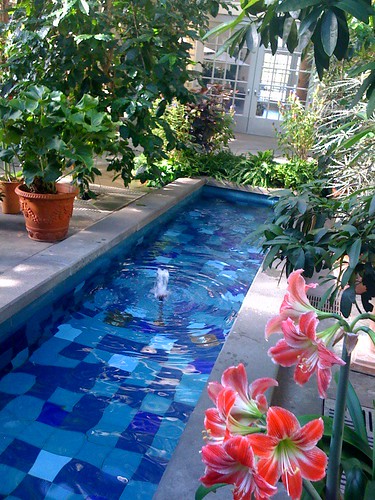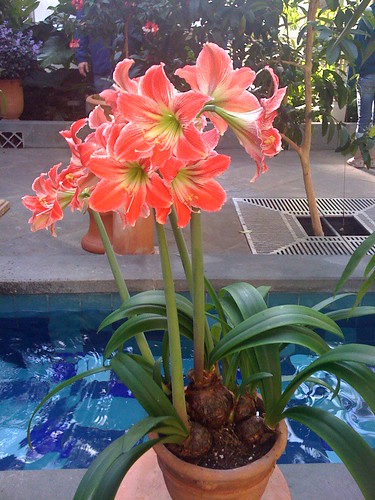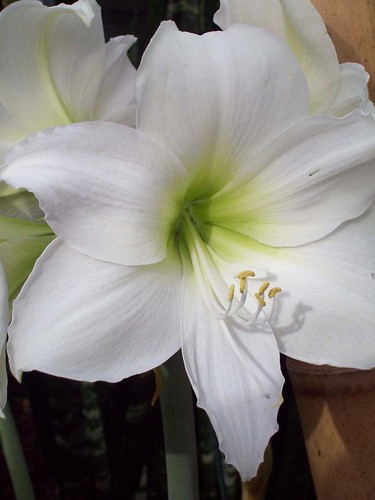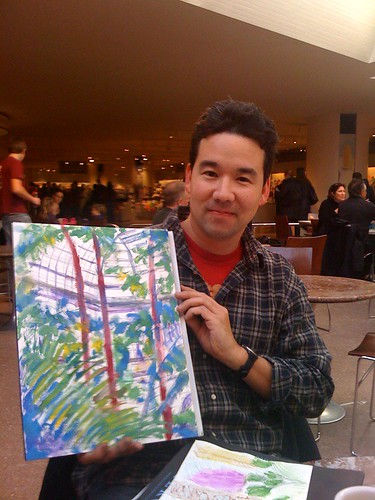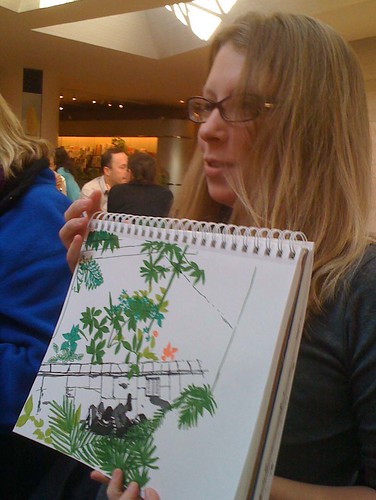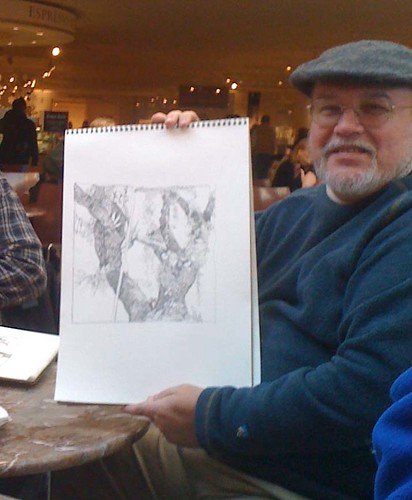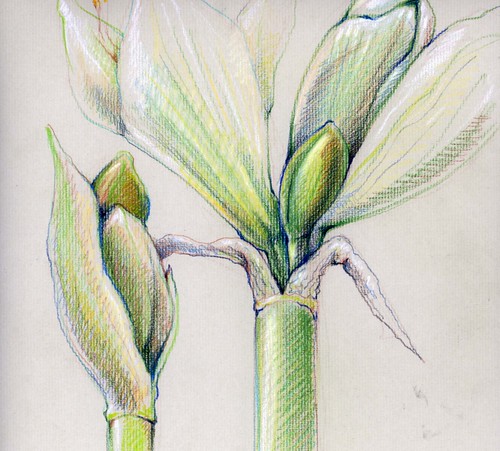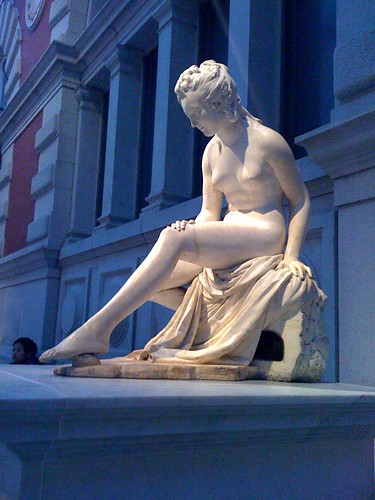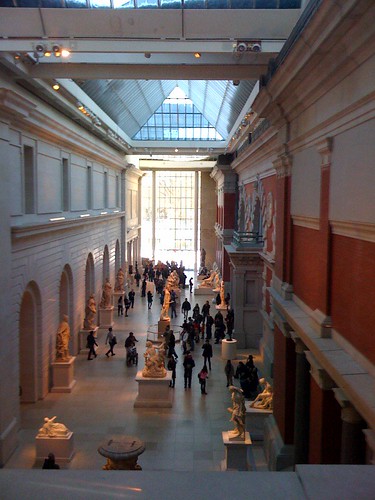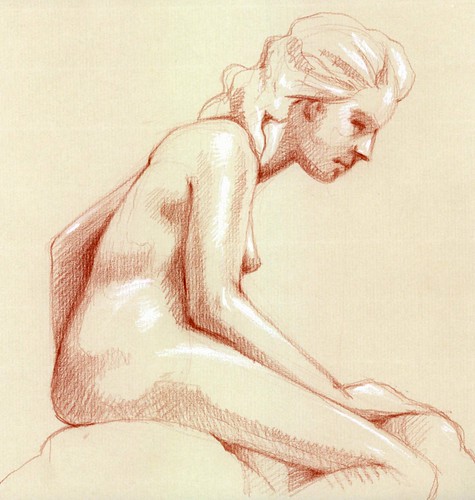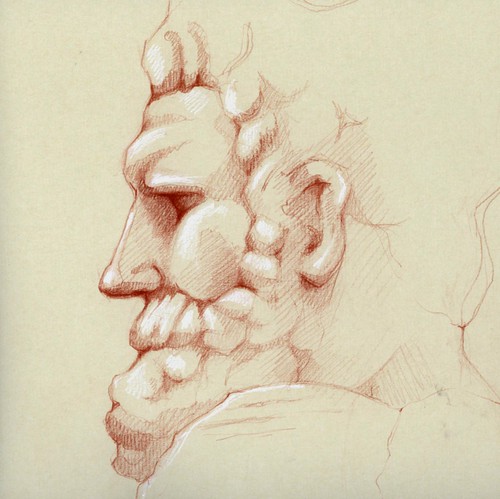Last week I attended an educational program at the
National Gallery of Art (NGA) on how
art conservators, using x-radiographs, can see how Rembrandt developed his paintings. The program was lead by
Melanie Gifford, Research Conservator for Painting Technology at the National Gallery of Art's Conservation Department. The program began with Gifford explaining how
Rembrandt worked. He typically covered his canvas with a red ground, followed by a gray ground, he would then freely draw and block in the figures using brown paint. His underpainting was applied with bright pigment and in an exuberant manner. The final layer was applied thickly with an
impasto that is one of Rembrandt's signatures. He layered the paint on the canvas, almost sculpting the features of his sitters. He also used a sharp tool to scratch paint out. We were able to observe these techniques by viewing the Rembrandts in the
Dutch Galleries at the NGA with the use of monocular devices and by looking at x-radiographs of the paintings.
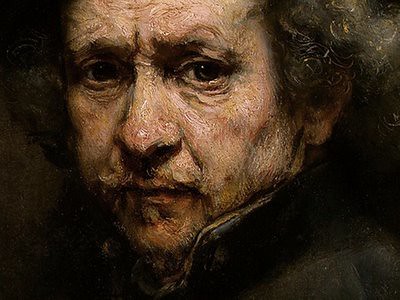
Detail of Rembrandt's "Self Portrait", 1659, National Gallery of Art, Washington, DC.

"A Polish Nobleman" by Rembrandt, 1637, National Gallery of Art, Washington, DC.
During the program we examined paintings once attributed to Rembrandt, but now believed to be by Rembrandt's workshop. By studying the underpainting conservators can reconstruct how the paint was applied. The bravado with which Rembrandt painted is difficult to copy. Below is a painting once thought to be by Rembrandt, but now thought to be by his student
Govaert Flinck.
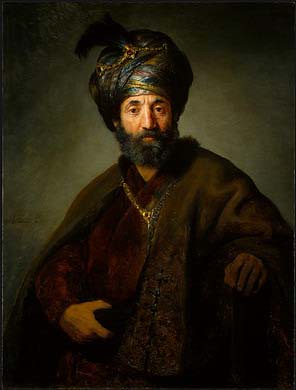
"Man in Oriental Costume" by Rembrandt and his Workshop (probably Govaert Flinck), 1635, National Gallery of Art, Washington, DC.
On March 5, 2011 I will be attending an
all day workshop at the NGA called
"Views of Venice: Canaletto and His Rivals". This program will focus on the upcoming National Gallery of Art exhibition on
Canaletto's paintings of
Venice (February 10-May 30, 2011).
